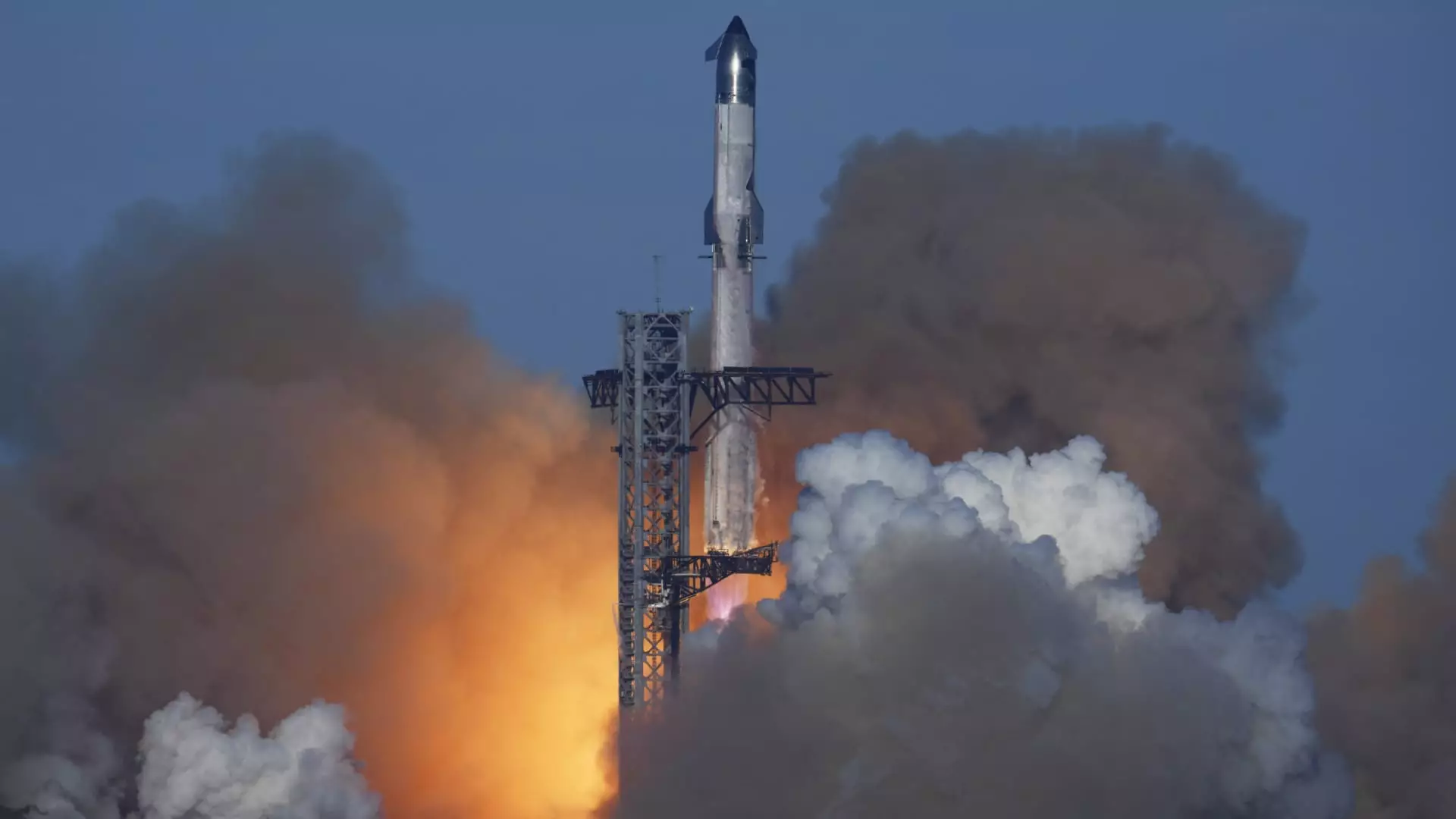Recently, the Federal Aviation Administration (FAA) announced that SpaceX’s Starship rocket would remain grounded pending the conclusion of an investigation into the rocket’s midflight failure during its latest test. This unexpected incident not only disrupted the scheduled operations of commercial airlines but also raises significant questions regarding safety protocols and regulatory measures in the aerospace sector.
The grounding of the Starship had an immediate ripple effect on commercial air travel. The FAA had to reroute numerous flights operated by major airlines, including American Airlines, JetBlue Airways, and Delta Air Lines. This disruption points to the interconnectedness of space exploration and traditional aviation, highlighting the complexities and challenges of managing airspace in an era where commercial spaceflights are becoming increasingly common. The safety of passengers and crew flew into the spotlight when the FAA acted promptly to prevent any risk posed by falling debris from the Starship explosion.
The Nature of the Incident
The incident itself was marked by a dramatic explosion of the Starship, which occurred just minutes after its launch. Eyewitnesses shared videos across social media, showing the rocket fracturing mid-air and dispersing debris into the environment. SpaceX has suggested that a fire within the vehicle triggered the catastrophic failure, an alarming revelation that begs the question of what went wrong during the launch sequence and what implications it has for future missions.
Property Damage and Regulatory Response
Although the FAA reported no injuries to the public, it did acknowledge incidents of property damage on the Turks and Caicos Islands, a finding that could lead to ramifications not only for SpaceX but also for regulatory oversight in commercial spaceflight. The activation of a “Debris Response Area” indicates that the FAA took immediate safeguards seriously, ensuring that aircraft could avoid potential hazards. This marks an essential point in the discussion of liability and accountability in aerospace ventures.
Contradicting Statements and Clarity Issues
A notable aspect of the incident pertains to the conflicting communications between SpaceX and the FAA about the location of falling debris. SpaceX initially claimed that the debris fell within “predefined hazard areas,” which seemed to challenge the FAA’s activation of the Debris Response Area. This disparity in messaging raises concerns about transparency and the adequacy of crisis communication, especially in an industry where any misinformation can significantly impact public trust and safety guidelines.
For SpaceX, the road ahead is laden with scrutiny. The company must undergo a thorough investigation and will need to implement any necessary corrective actions before the FAA will reconsider the issuance of a new launch license. As government agencies and private companies navigate the intricacies of commercial space travel, lessons gleaned from incidents like this one will undoubtedly shape policies and launch protocols in the future. The outcome of this investigation may pave the way for refined safety measures and restore confidence in the ambitious undertakings of private aerospace firms.

